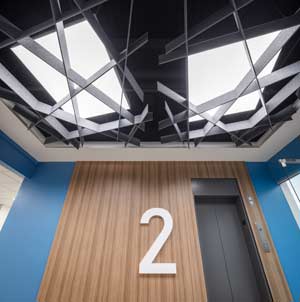 Each floor’s useable space has been maximized, ensuring the high efficiency of the building’s utilities and related equipment, while providing flexible layout options. The streamlined approach incorporates adaptable model layouts that can be repeated and readily adjusted to suit each tenant’s lab, research, and office needs without requiring large scale renovations.Woodruff Brown Photography
Each floor’s useable space has been maximized, ensuring the high efficiency of the building’s utilities and related equipment, while providing flexible layout options. The streamlined approach incorporates adaptable model layouts that can be repeated and readily adjusted to suit each tenant’s lab, research, and office needs without requiring large scale renovations.Woodruff Brown PhotographyTransforming a Semi-Vacant Office Building Into a Biotech Hub
The space has been reimagined for start-up science, laboratory and research companies
All across the United States, office complexes are sitting partially or completely vacant. The new Elm City Bioscience Center in downtown New Haven, Connecticut, is one example of how to transform an underutilized office building into fresh space as a vital biotech hub.
From the design of shared and private interior spaces to the graphic elements and branding – including the facility’s new name and logo – Svigals + Partners repositioned the eight-floor building on behalf of developer The Hurley Group, establishing its new identity as a modern biotech hub for the advancement of start-up science, laboratory, and research companies.
As one of many partially vacant office facilities that cities and communities nationwide are now grappling with, the New Haven building’s revitalization serves as a model for the smart reuse of semi-stagnant buildings into productive places to help reinvigorate communities.
Extra Workspace

Each lab suite is designed to accommodate workspace outside of the lab, including offices, meeting rooms and break rooms, with the option for multiple tenants to share these spaces.
Welcoming Lobby

The renovated main lobby, elevator lobbies and corridors welcome tenants into the facility.
Infrastructure Upgrades

Upgrades to the building’s infrastructure were vital to the building’s success. They encompassed upgrading mechanical, electrical, and plumbing systems to accommodate the biotech tenants, along with repurposing existing shafts to meet the tenants’ laboratory equipment and operations requirements.
Related Topics:















